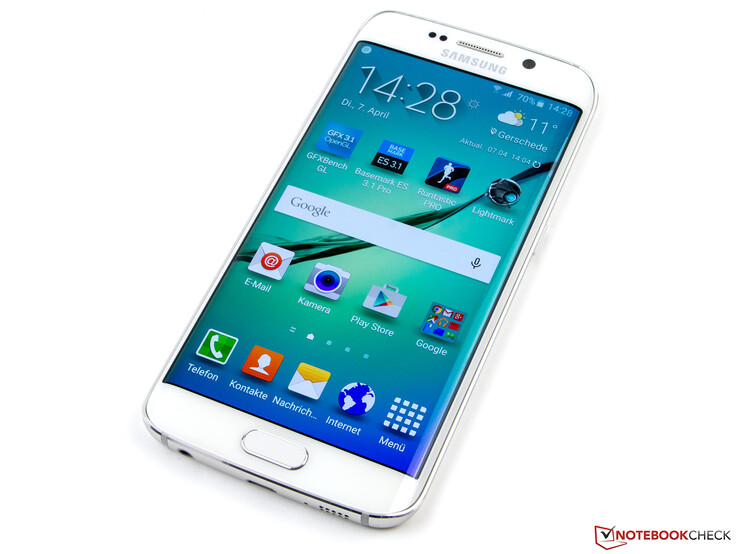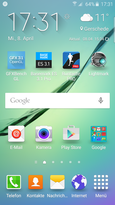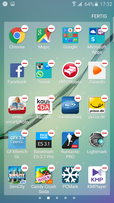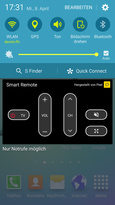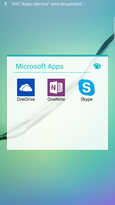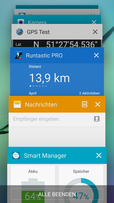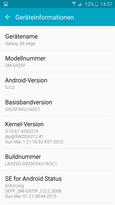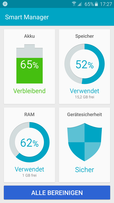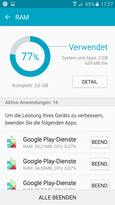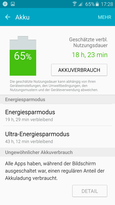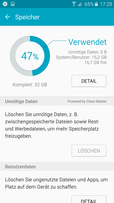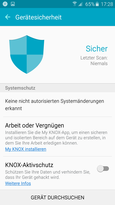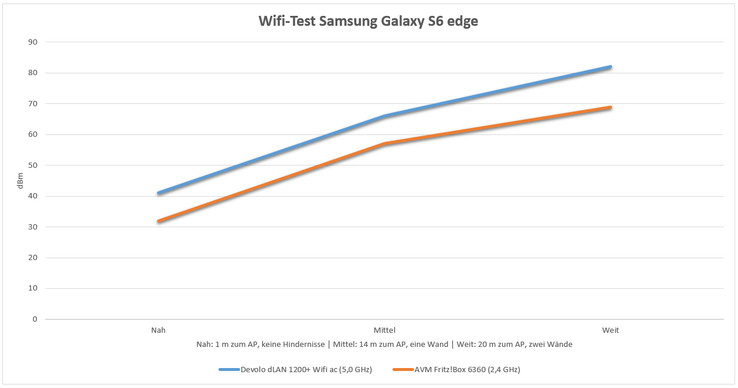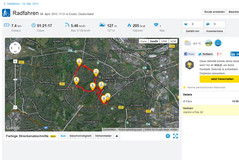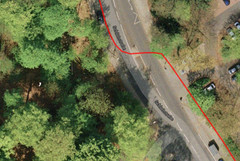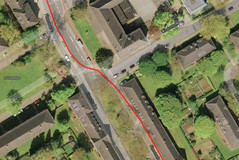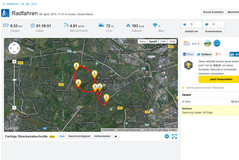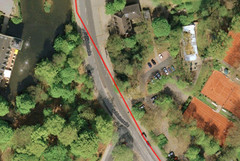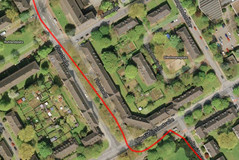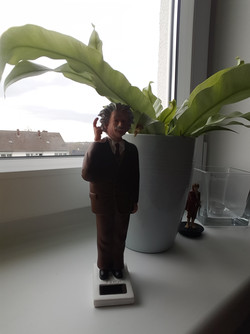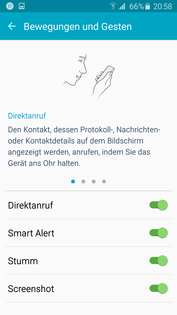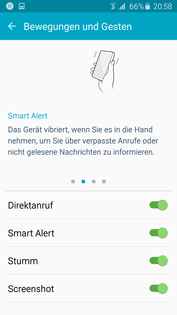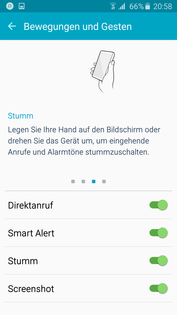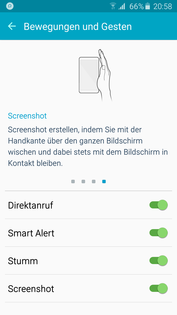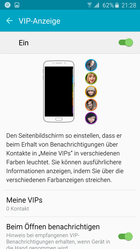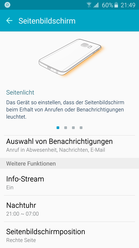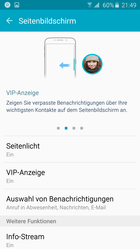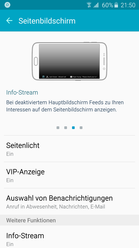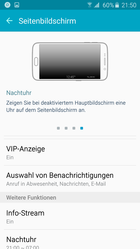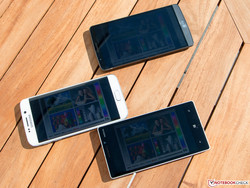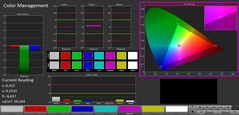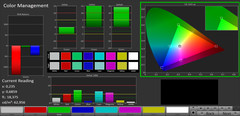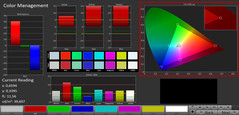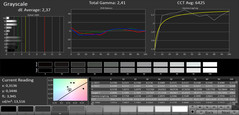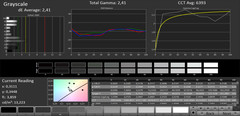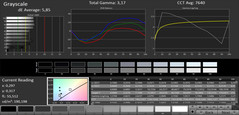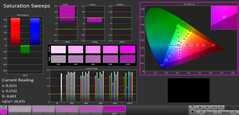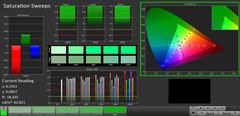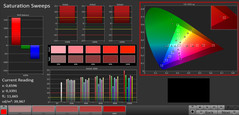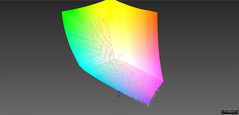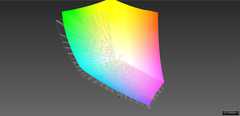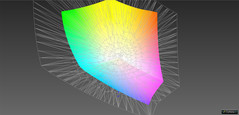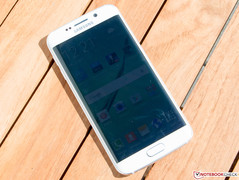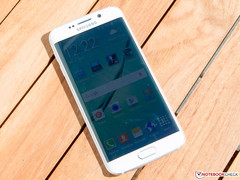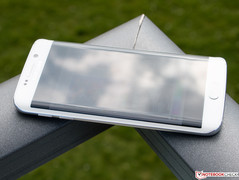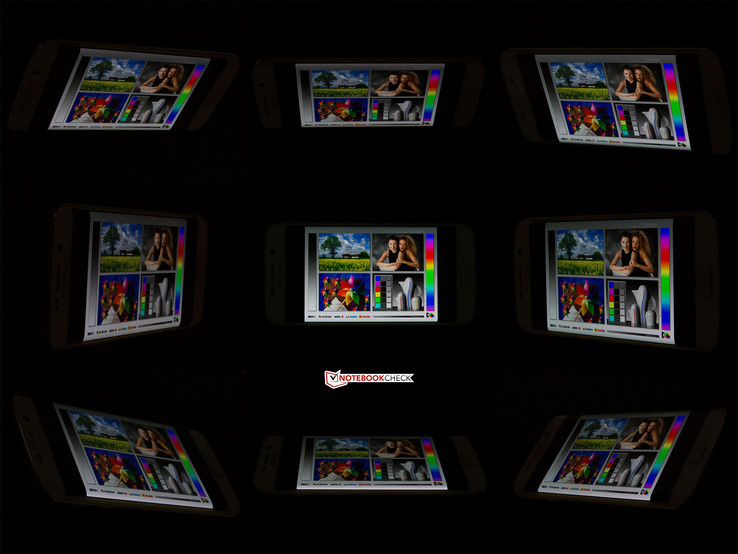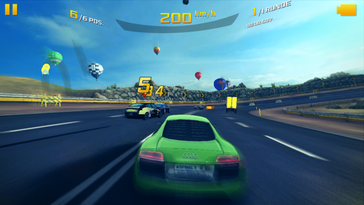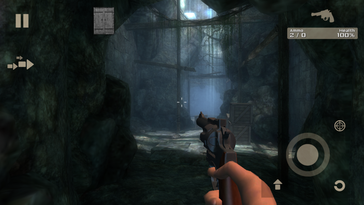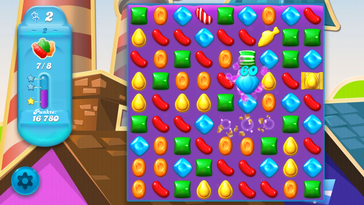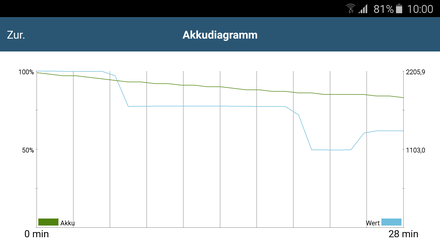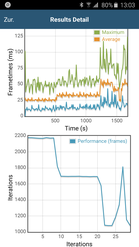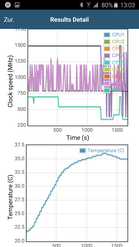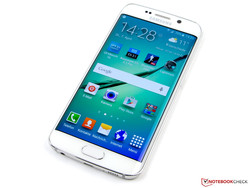Samsung Galaxy S6 Edge Smartphone Review
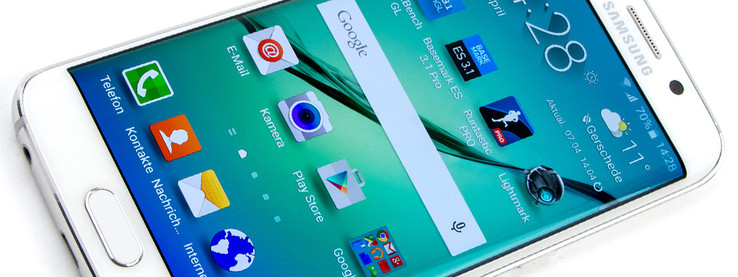
For the original German review, see here.
After the underwhelmed customers' reactions to the Galaxy S5, which could not meet the high expectations, the Korean manufacturer completely reworked the concept of its flagship smartphone without losing the familiar look. Plastic is gone now, Samsung uses glass and aluminum instead.
Similar to the Galaxy S6 you now get an integrated battery and you cannot expand the storage, either. Samsung offers three versions in return: With 32, 64 or 128 GB internal storage. Prices start at 849 Euros, but every storage upgrade costs another 100 Euros, so the biggest version costs a hefty 1,049 Euros, which is even more expensive than the iPhone 6 Plus (up to 999 Euros). This is a whole lot of money, even for a premium smartphone.
All the rivals are less expensive. The list includes devices like the HTC One M9, Sony Xperia Z3, LG G3, Motorola Moto X, Nokia Lumia 930, Huawei Ascend P7, Google Nexus 6, Apple iPhone 6 and the OnePlus One.
Case
The Samsung Galaxy S6 Edge is slightly thicker than its normal sibling, but with 7 millimeters noticeably thinner than the Galaxy S5. Both the front as well as the back are made of sturdy Corning Gorilla Glass 4, the frame and the basic construction are made of aluminum. Customers can choose between the colors White Pearl, Black Sapphire, Gold Platinum and Green Emerald, or simply put white, black, gold and green.
The smartphone feels a bit awkward in the hand. Because of the rounded glass, the transition to the frame is pretty hard and feels a bit sharp. The build quality, however, is excellent. All the gaps are consistent and the Galaxy S6 Edge has no problems with pressure or twisting; you can only hear very quiet creaking sounds when you try to twist it.
The Nano SIM slot is at the top of the smartphone and you will need a small tool to open it, which is provided. It is nice that the slot sits flush with the rest of the case. This is also the only chance to open the chassis, since you cannot access the battery anymore. This is unfortunate for business customers in particular, because Samsung focused on them during the announcement at the MWC in Barcelona, but the maintainability is affected. In return you now get wireless charging as a standard feature. The manufacturer also waived the IP certification, which means the Samsung Galaxy Edge S6 is neither dust resistant nor waterproof.
Connectivity
Everyone is talking about the fact that Samsung now uses a non-removable battery and waived a microSD slot. But they actually waived more. The faster USB 3.0 port was replaced by the older 2.0 standard, and the Galaxy S6 Edge does not support DLNA or MHL, either. The HTC One M9 is better equipped and supports all these features, but the micro USB port only supports the 2.0 standard as well.
The high-end device from Samsung, however, offers more and is once again equipped with an infrared sensor, which means you can control your home cinema as well as air conditioners. NFC, WiFi-Direct and Miracast are also available.
Software
The Samsung Galaxy S6 Edge also uses Google's current Android 5.0.2 Lollipop with its familiar user interface TouchWiz UX. You will have no problems with the handling if you have ever used a Samsung smartphone before.
Besides the Google apps, Samsung also provides its own app store with the corresponding application like S Voice, S Health or the S Planner. New is the Peel Smart Remote, which replaces WatchOn. The Smart Manager gives information about the status of the device, starting with the battery charge, the storage use and the security of the device. Samsung's security hub Knox is now directly integrated and is supposed to make the Galaxy-series more attractive for business customers. There are unfortunately also some third-party apps on the smartphone, but it is no problem to delete them.
Communication & GPS
The Samsung Galaxy S6 Edge can use the HSPA+ standard (up to 42 Mbps downstream and up to 5.76 Mbps upstream) as well as the modern LTE Cat. 6 (up to 300 Mbps downstream and 50 Mbps upstream) for connections to the Internet. A wide coverage of frequencies ensures that globetrotters can use the Internet almost all over the world.
Bluetooth 4.1 is available for short range wireless transfers with other devices. This works without problems and the range was very good in our review. It was now problem to listen to music via external speakers with a distance of ten meters without dropouts or distortions during the playback.
The wireless module of the Samsung Galaxy Edge S6 supports the current IEEE-802.11 standards a/b/g/n/ac in 2.4 as well as 5 GHz networks. Thanks to the HT80-MIMO technology (2x2) you are supposed to get stable connections with transfer rates of up to 623 Mbps. There are rivals that manage higher theoretic values, but if you always want the highest performance, you can use the download turbo that combines WLAN and LTE. The range of the WiFi module is really good, even with a distance of 20 meters from the access point we still had a good signal quality, and websites loaded very quickly. Only the reaction time was a bit higher.
The Galaxy S6 Edge can locate its position via the satellite networks GPS, Glonass and BeiDou. The sat fix was very quick, both outdoors as well as indoors and the accuracy was also very good according to the test apps. The location is accurate down to four meters.
We also tested the smartphone against an outdoor GPS Garmin eTrex 30, and the differences were surprisingly big. We get an overall difference of around 10 % for the complete track, which is a pretty weak performance when you consider the high-end claim. The sibling Galaxy S6 is a bit better, but not perfect, either. Looking at the individual sections of the track we can quickly see the reasons for the deviations. The Edge likes to take the direct line between two points quite often, so we are just driving through the grass strip and do not use the traffic island at the road crossing. All those shortcuts then add up over the complete track length.
Telephone & Voice Quality
The voice quality of the Samsung Galaxy Edge S6 is excellent and crystal clear on both sides when you hold the device to your ear. The speaker is good as well, but it produces echoes. The provided headset is unfortunately a disappointment. The microphone captures voices pretty well, but the user of the S6 sounds slightly distorted. The headset itself produces a permanent murmur in the ears and we do not like it at all. Sometimes there was also some crackling. If you want to use a headset to make calls, we recommend you get a better one, which is pretty sad when you consider the starting price of 849 Euros.
Cameras
Samsung promised a great camera during the announcement of the Galaxy S6 devices. The results are supposed to be very good in low-light situations in particular. But we start at the front, because there were some changes as well. The webcam cannot really be called that anymore with a 5 MP sensor and it works really well for selfies. It is handy that the heart rate monitor at the back of the smartphone can be used as a trigger. The pictures are pretty good in well-lit environments, but the quality quickly decreases when the lighting is weaker and edges appear very blurred, but the sensor still captures comparatively much light.
The main focus, however, is on the rear camera. Besides an autofocus and an LED flash, it has an aperture of f/1.9 that captures a lot of light. It is supposed to ensure that the sensor gets enough picture information, even in darker environments. This works pretty well with the Galaxy S6 Edge in practice, but the Lumia 930 is still a bit better in a comparison. The sharpness of the Microsoft smartphone is particularly convincing. The pictures of the Edge are brighter in return, even though the edges are more frayed out. The Lumia does, however, support the DNG format, so the dark picture can be adjusted without losses afterwards.
The Samsung Galaxy S6 Edge is really great in daylight. The pictures are razor sharp and the colors are very good. There are no big drawbacks at the edges of the pictures, either. The camera shoots extremely quickly and there is subjectively no delay. This does change if it is very bright. It can take up to one or two seconds before the smartphone takes the picture on a very sunny day if the sensor captures a lot of light. Still, the Edge has no problems with overexposed shots.
The review unit can take videos in many different resolutions, all the way up to Ultra HD with usable 30 fps. The frame rates can unfortunately not be adjusted, unlike the Lumia 930 (2160p @ 24, 25 or 30 fps). If you prefer Full HD, you can do this in HFR (60 fps). Additional features like HDR, video effects, stabilization or the tracing autofocus, however, are only available for common 1080p recordings. A slow-motion effect is integrated as well, which works with 120 fps and unfortunately only up to 1280 x 720 pixels. The iPhone 6 is much better in this regard (up to 240 fps @ 720p).
All in all, Samsung offers an extremely good smartphone camera, which is behind the rivals in some sections, but the overall package is still great. The software in particular can improve the results and you can quickly launch it with a double tap on the home button.
Accessories & Warranty
The box of the Samsung Galaxy Edge S6 includes a modular power adaptor (10 W, 5 V, 2A) that supports fast charge. You also get a small SIM tool, a data cable and a headset as well as some security and warranty information. The preloaded Microsoft apps include a small present for the: Users of OneDrive get 100 GB free online storage for two years.
Samsung also offers a lot of additional accessories in its own online store. You can choose between covers, wireless charging stations, headsets and battery packs.
The warranty period is 24 months and cannot be extended.
Input Devices & Handling
The 5.1-inch capacitive touchscreen recognizes up to ten inputs simultaneously and executes inputs quickly and without delays. We could not determine any problems in the peripheral areas or the rounded display sections. The surface made of Corning Gorilla Glass 4 provides excellent gliding capabilities and the handling is very comfortable.
Text inputs on the virtual keyboard are also executed well, even though the keys appear a bit small. A nice addition is that country-specific functions are already integrated and you do not have to switch between layouts.
The home button can launch the camera app with a double tap directly from standby. It also accommodates the fingerprint reader, which can be used to unlock the device or authorize purchases. Contrary to the predecessor you do not have to swipe your finger across the sensor, but it is sufficient to put it on the sensor. The detection rate is now much better with the new design, but it is not possible to register the fingerprint when the sensor is not fully covered.
Samsung integrates some gesture features. A contact that is shown on the display can be called by holding the smartphone to your ear. Smart Alert lets the Galaxy S6 Edge vibrate when you pick the device up and there are missed calls or messages. You can easily mute the smartphone when you turn it around or hold your hand over it. It is also possible to take a screenshot when you swipe across the display with the side of your hand.
And then there are obviously the two edges. They are not just a visual gimmick, but provide some smaller features as well. They have a central role in the handling of the Galaxy S6 Edge. If the device is lying on its display, one of the two sides creates a colored signal if there is a call. Contacts can be sorted in different groups, which are assigned with a certain color. This means the color can help you to decide whether you take the call or not. You can also put your finger onto the heart rate monitor to stop constant calls or reject a call. Depending on the contact you can send a predefined message, so that interruptions in a meeting, for example, can be avoided quickly and discreetly.
The side areas of the display can also show notifications for the most important contacts. It is also possible to display a news feed or just the time and the date when the screen is deactivated. The function to use the deactivated display is already familiar since the first Nokia smartphones, you don’t necessarily need a rounded display. This also applies for other features that would work without a rounded panel – but not as nice and impressive. The video below shows some of the features.
Display
The display of the Samsung Galaxy S6 Edge would be a real highlight, even without the rounded sides. The 5.1-inch Super AMOLED screen has a resolution of 2560 x 1440 pixels. This corresponds with a screen ratio of 16:9 and an enormous pixel density of 576 ppi, which means contents are razor sharp and you cannot see individual pixels. Still, the rounded display is a bit unusual at first. The outer keyboard elements are visually affected when you write a message, but this does not reduce the reliability of inputs. The rounded areas are also used when you watch movies, which can sometimes looks strange.
We measured the maximum luminance of the Super AMOLED, which can be manually adjusted, with a pure white display. The Galaxy S6 Edge manages up to 352 cd/m² in this scenario and still 338 cd/m² on average, which is slightly darker compared to the predecessor. This can, however, also be explained with measuring tolerances or fluctuations in the series. The result does not seem to be very high compared to other flagships like the iPhone 6 (up to 520 cd/m²) or the Xperia Z3 (up to 702 cd/m²), but the LCDs have a much lower contrast that will reduce this alleged advantage. Similar to the Note 4, however, the luminance of the Galaxy S6 Edge can be further increased if the brightness sensor is activated. According to Samsung, the panel is supposed to manage up to 600 cd/m². We took the smartphone and the measuring devices outside on a sunny day and were able to measure 630 cd/m². Still, this result should be treated with caution since the bright ambient light can influence the result. But it still shows impressively that the Super AMOLED can increase its brightness significantly. The brightness distribution is also very good with 94 percent.
| |||||||||||||||||||||||||
Brightness Distribution: 94 %
Center on Battery: 343 cd/m²
Contrast: ∞:1 (Black: 0 cd/m²)
ΔE ColorChecker Calman: 2.2 | ∀{0.5-29.43 Ø4.78}
ΔE Greyscale Calman: 2.37 | ∀{0.09-98 Ø5}
87.77% AdobeRGB 1998 (Argyll 1.6.3 3D)
Gamma: 2.41
CCT: 6425 K
| Samsung Galaxy S6 Edge Mali-T760 MP8, Exynos 7420, 32 GB UFS 2.0 Flash | Samsung Galaxy S5 Adreno 330, 801 MSM8974AC, 16 GB eMMC Flash | HTC One M9 Adreno 430, 810 MSM8994, 32 GB eMMC Flash | Motorola Moto X 2. Gen 2014 Adreno 330, 801 MSM8974AC, 16 GB eMMC Flash | LG G3 Adreno 330, 801 MSM8974AC, 16 GB eMMC Flash | Nokia Lumia 930 Adreno 330, 800 MSM8974, 32 GB eMMC Flash | Apple iPhone 6 PowerVR GX6450, A8, 128 GB eMMC Flash | |
|---|---|---|---|---|---|---|---|
| Screen | -47% | -54% | -55% | -49% | -139% | -13% | |
| Brightness middle (cd/m²) | 343 | 358 4% | 474 38% | 259 -24% | 417 22% | 275 -20% | 520 52% |
| Brightness (cd/m²) | 338 | 364 8% | 458 36% | 263 -22% | 395 17% | 278 -18% | 511 51% |
| Brightness Distribution (%) | 94 | 82 -13% | 85 -10% | 91 -3% | 89 -5% | 89 -5% | 88 -6% |
| Black Level * (cd/m²) | 0.4 | 0.96 | 0.61 | ||||
| Colorchecker dE 2000 * | 2.2 | 5.28 -140% | 6.32 -187% | 6.52 -196% | 5.67 -158% | 10.99 -400% | 3.92 -78% |
| Greyscale dE 2000 * | 2.37 | 4.65 -96% | 6.36 -168% | 3.05 -29% | 5.66 -139% | 8.29 -250% | 4.33 -83% |
| Gamma | 2.41 91% | 2.48 89% | 2.43 91% | 2.31 95% | 2.53 87% | 2.16 102% | 2.46 89% |
| CCT | 6425 101% | 7690 85% | 8218 79% | 6226 104% | 7741 84% | 6731 97% | 7384 88% |
| Color Space (Percent of AdobeRGB 1998) (%) | 87.77 | 58.81 -33% | 59 -33% | ||||
| Contrast (:1) | 1185 | 434 | 852 |
* ... smaller is better
The black of the OLED panel is obviously deep and does not glow a bit, which results in an infinite contrast, at least in theory. Rivals with conventional LCDs have not chance against that. But other manufacturers use AMOLED screens as well, corresponding devices are the Moto X, Nexus 6 and Lumia 930. But there are also differences between OLED screens, and we took a closer look at them.
Samsung once again offers the three familiar color profiles and the system automatically adjusts them to the content or you can select the manually. The profile Cinema uses very saturated colors and shows a slight, but visible blue cast. Colors are not displayed naturally but very rich. The profile Picture is supposed to represent colors more accurate and the over-saturation is much lower, but still noticeable. This means the pictures appear more brilliant. You can hardly see a color cast, only a slight shift to yellow is visible. The profile Simple is supposed to represent colors as natural as possible, so the saturation is comparatively low. Compared to an IPS panel you can still see the typical OLED effect.
The profile Simple is the best for the evaluation of the color accuracy. We can measure an excellent DeltaE deviation of 2 for the grayscale, and the same applies for the ColorChecker in the CalMAN software. Those are excellent results that are not managed by any rival, only the Samsung Galaxy Note 4 showed even better values. The color space coverage is very good as well. 92 percent of the sRGB and 88 percent of the AdobeRGB color space are unrivaled within the comparison. All in all, the Galaxy S6 Edge convinces in all areas and we could not find any issues.
The extremely high contrast of an OLED screen and the high brightness of the Samsung display are supposed to ensure excellent outdoor capabilities for the Galaxy S6 Edge, and the premium product from the Koreans actually works extremely well outdoors. The display content is visible even under bright sunlight, only the glossy surface can sometimes create inconvenient reflections, but other smartphones suffer from the same problem.
The viewing angle stability of the Samsung Galaxy Edge S6 is flawless. It does not matter from which side you look, colors do not distort and even the brightness does not drop with very flat angles. We could not determine a ghost-effect, either. The glossy display surface can result in small restrictions, but this will only be a problem in some situations.
Performance
The Samsung Galaxy S6 Edge has the same technical specifications as the Galaxy S6. While the manufacturer still used a Snapdragon SoC from Qualcomm for the predecessor S5, they use their own chip for the flagship device this time. There are some rumors that the heat development of the Snapdragon 810 was a problem, so Samsung decided not to use it.
Similar to Intel's new Atom-series, the Exynos 7420 is manufactured in a 14 nm process. Otherwise, it is very similar to the Snapdragon 810 on paper. Both use two sets of quad-cores that use the Big.Little concept. The four Cortex A57 cores run with up to 2.1 GHz, the four Cortex A53 cores with up to 1.5 GHz. The latter are primarily used for daily tasks and are supposed to consume less power. If the system needs more performance it uses the A57 cores. It is even possible that all eight core run simultaneously for short periods.
In practice you get a very good system performance and you can only rarely recognize some stutters. The Exynos SoC can set new records in the benchmarks and can beat the Qualcomm Snapdragon 810 MSM8994 as well as the Apple A8. The latter is only better in the Single-Core tests, but it does not stand a chance as soon as you use all cores. The review unit is 38 percent faster than the HTC One M9 in the Multi-Core test of Geekbench 3 (32-bit) and manages 4843 points, and even 5619 points in the 64-bit version. The Galaxy S6 Edge can also set an impressive new record in PCMark for Android with 5050 points. The One M9 falls behind by 17 percent.
| PCMark for Android - Work performance score (sort by value) | |
| Samsung Galaxy S6 Edge | |
| LG G3 | |
| LG G3 | |
| OnePlus One | |
| LG G Flex 2 | |
| HTC One M9 | |
| AnTuTu v5 - Total Score (sort by value) | |
| Samsung Galaxy S6 Edge | |
| LG G3 | |
| OnePlus One | |
| Sony Xperia Z3 | |
| Google Nexus 6 | |
| LG G Flex 2 | |
| Apple iPhone 6 | |
| HTC One M9 | |
Graphics are handled by the ARM Mali-T760 MP8, which is integrated into the SoC Samsung Exynos 7420. The GPU supports modern graphics interfaces like OpenGL ES 3.1 and DirectX 11. It is also manufactured in a 14 nm process and runs with 700 up to 772 MHz.
We were able to use the majority of benchmarks without problems, but the Anomaly 2 benchmark crashed and the screen stayed black in Basemark ES 3.1. The other benchmarks indicate a high-end GPU. It leads the comparison in GFXBench 2.7 and 3.0, but is just slightly faster than the Adreno 430 in the HTC One M9. The PowerVR GX6450 from the iPhone 6 on the other hand is easily beaten and the frame rates are up to 40 % higher.
The Galaxy S6 Edge benefits from its fast processor in 3DMark and manages the best overall results. Only the Nexus 6 is a bit faster, but if you look at the GPU results of the benchmark, you can see that smartphones with the Adreno 430 are faster in this section as well.
GFXBench 3.1 shows that the review unit cannot keep up with the One M9, especially if you use the current OpenGL ES 3.1 interface. The rival is also better in Lightmark. Overall, however, Samsung uses one of the fastest GPUs for smartphones that is currently available.
| 3DMark | |
| 1280x720 offscreen Ice Storm Unlimited Score (sort by value) | |
| Samsung Galaxy S6 Edge | |
| Samsung Galaxy S5 | |
| Huawei Ascend P7 | |
| LG G3 | |
| OnePlus One | |
| Sony Xperia Z3 | |
| Google Nexus 6 | |
| LG G Flex 2 | |
| Apple iPhone 6 | |
| HTC One M9 | |
| 1280x720 offscreen Ice Storm Unlimited Graphics Score (sort by value) | |
| Samsung Galaxy S6 Edge | |
| Samsung Galaxy S5 | |
| Huawei Ascend P7 | |
| LG G3 | |
| OnePlus One | |
| Sony Xperia Z3 | |
| Google Nexus 6 | |
| LG G Flex 2 | |
| Apple iPhone 6 | |
| HTC One M9 | |
| 1280x720 offscreen Ice Storm Unlimited Physics (sort by value) | |
| Samsung Galaxy S6 Edge | |
| Samsung Galaxy S5 | |
| Huawei Ascend P7 | |
| LG G3 | |
| OnePlus One | |
| Sony Xperia Z3 | |
| Google Nexus 6 | |
| LG G Flex 2 | |
| Apple iPhone 6 | |
| HTC One M9 | |
| GFXBench 3.0 | |
| on screen Manhattan Onscreen OGL (sort by value) | |
| Samsung Galaxy S6 Edge | |
| Samsung Galaxy S5 | |
| LG G3 | |
| OnePlus One | |
| Sony Xperia Z3 | |
| Google Nexus 6 | |
| LG G Flex 2 | |
| Apple iPhone 6 | |
| HTC One M9 | |
| 1920x1080 1080p Manhattan Offscreen (sort by value) | |
| Samsung Galaxy S6 Edge | |
| Samsung Galaxy S5 | |
| LG G3 | |
| OnePlus One | |
| Sony Xperia Z3 | |
| Google Nexus 6 | |
| LG G Flex 2 | |
| Apple iPhone 6 | |
| HTC One M9 | |
| GFXBench 3.1 | |
| on screen Manhattan ES 3.1 Onscreen (sort by value) | |
| Samsung Galaxy S6 Edge | |
| LG G Flex 2 | |
| HTC One M9 | |
| 1920x1080 Manhattan ES 3.1 Offscreen (sort by value) | |
| Samsung Galaxy S6 Edge | |
| LG G Flex 2 | |
| HTC One M9 | |
| Basemark ES 3.1 / Metal - offscreen Overall Score (sort by value) | |
| LG G Flex 2 | |
| HTC One M9 | |
| Epic Citadel - Ultra High Quality (sort by value) | |
| Samsung Galaxy S6 Edge | |
| Samsung Galaxy S5 | |
| Huawei Ascend P7 | |
| LG G3 | |
| OnePlus One | |
| Sony Xperia Z3 | |
| Motorola Moto X 1. Gen 2013 | |
| LG G Flex 2 | |
| HTC One M9 | |
| Lightmark - 1920x1080 1080p (sort by value) | |
| Samsung Galaxy S6 Edge | |
| LG G3 | |
| OnePlus One | |
| LG G Flex 2 | |
| HTC One M9 | |
We used the preloaded Samsung Browser 3.0, which is based on the engine of Google Chrom 38, for our browser tests of the Galaxy S6 Edge. The benchmark results of the review unit are excellent and are only beaten by the browsing champion iPhone 6 in Sunspider, Peacekeeper and Browsermark.
Subjectively, there is hardly any criticism. Websites are opened quickly, only more complex sides can take longer and we can also notice small stutters occasionally.
| Peacekeeper - --- (sort by value) | |
| Samsung Galaxy S6 Edge | |
| Samsung Galaxy S5 | |
| Huawei Ascend P7 | |
| Nokia Lumia 930 | |
| LG G3 | |
| OnePlus One | |
| Sony Xperia Z3 | |
| Motorola Moto X 1. Gen 2013 | |
| LG G Flex 2 | |
| Apple iPhone 6 | |
| HTC One M9 | |
| Browsermark - 2.1 (sort by value) | |
| Samsung Galaxy S6 Edge | |
| Nokia Lumia 930 | |
| LG G3 | |
| LG G3 | |
| OnePlus One | |
| LG G Flex 2 | |
| Apple iPhone 6 | |
| HTC One M9 | |
* ... smaller is better
Samsung does not use eMMC storage for its two new flagship model and now uses the new UFS 2.0 storage, which is supposed to have a higher performance. The benchmarks show impressive results for the Galaxy S6 Edge and the read and write speeds can be compared to a real SSD. This means the review unit can take the top spot in our benchmark database, only the OnePlus One is faster with sequential writes. But the Edge is much faster than the high-end rivals with the important 4K reads and is four up to ten times faster.
The amount of storage varies between 32, 64 and 128 GB, depending on the configuration. You can unfortunately not expand it anymore. Our review unit is the smallest version and you can use around 25 of the 32 GB after the initial launch.
Games
Games on the Samsung Galaxy S6 Edge are enjoyable and a visual highlight. The Super AMOLED screen shows brilliant colors and the GPU can run the games with the highest settings. It does not matter if you play complex games like Asphalt 8 and The Descent or simpler titles like Candy Crush, all games run smoothly and in the highest quality.
The sensors work without problems, only the speaker is not a highlight, but usually creates an undistorted sound.
Emissions
Temperature
The surface temperatures of the Samsung Galaxy S6 Edge are really low while idling and only reach up to 29.3 °C at some spots at the front. The back is even cooler with only 28 °C in the same scenario. The temperatures will increase under maximum load and we were able to measure up to 38.9 °C, which is not a very high value. Both the HTC One M9 (up to 38.4 °C) and the Ascend P7 (up to 37.9 °C) are even slightly cooler, but all the other rivals are noticeably warmer and surpass the 40 °C mark. We can measure the highest temperature in our comparison for the Nokia Lumia 930 (up to 48.4 °C).
The temperatures are not that cool inside the chassis. Shorts load periods are no problem for the SoC, but that changes under sustained load. We checked that with the battery tests of GFXBench 3.0 and 3.1. They run the T-Rex test thirty times in a row and log the battery capacity as well as the frame rates. The performance drops by around 25 percent during the eighth run and by 50 percent compared to the original performance in run number 22. This can results in dropped frames when you play games for a while, since we can only see half of the original 53 fps in the Offscreen test. The diagrams of GFXBench 3.1 clearly show that the clock of the GPU is below its nominal value for a longer period and the CPU cores are running at low frequencies in the last third of the test as well.
(+) The maximum temperature on the upper side is 38.9 °C / 102 F, compared to the average of 35.2 °C / 95 F, ranging from 21.9 to 247 °C for the class Smartphone.
(+) The bottom heats up to a maximum of 37.9 °C / 100 F, compared to the average of 34 °C / 93 F
(+) In idle usage, the average temperature for the upper side is 28.8 °C / 84 F, compared to the device average of 32.9 °C / 91 F.
Speakers
The speaker of the Samsung Galaxy S6 Edge can be really loud. This is not bad to start with, but the quality of the mono speaker leaves a lot of room for improvements. The sound is slightly distorted at the maximum level when you watch a movie, which is even worse when you listen to music. You will also have to live with background noise. The sound is unbalanced and the high tones are too present, but the quality is decent at medium volumes.
The provided headset could not convince us during calls. The situation is slightly better for media playback, but the high tones still distort and there is a slight noise in the background. We also tested the stereo jack with better headphones (Teufel Aureol), but the quality could not really convince us completely. The playback was slightly muffled and we missed brilliant tones. This means the HTC One M9 is superior to the Galaxy S6 in all sound areas, and Samsung should improve the sound performance in general.
Energy Management
Power Consumption
The power consumption of the Samsung Galaxy S6 Edge is pretty good and just slightly higher than the Galaxy S5 (up to 6.2 Watts) despite the faster components, but more frugal than the HTC One M9 (up to 7.5 Watts). Considering the smaller battery (2600 vs. 2800 mAh), the battery runtimes should be shorter. The manufacturer improved the consumption when the device is turned off or in standby, respectively.
You can either charge the S6 Edge wirelessly or with a cable. The latter has the advantage that it is much faster thanks to the implemented quick charge technology. A complete charge of an empty smartphone just took 1 hour and 26 minutes.
| Off / Standby | |
| Idle | |
| Load |
|
Key:
min: | |
Battery Runtime
As expected, the battery runtimes of the Samsung Galaxy S6 Edge are not as good as the predecessor Galaxy S5. This is probably a result of the thinner construction, so it also has a smaller battery. The smartphone still manages good result in our battery tests, but cannot set new records. You should be able to cover a day with one battery charge pretty well. At least if you do not use the camera excessively or play a lot of games, then an additional battery is almost mandatory.
The best comparability is provided by the tests with the adjusted panel brightness of 150 cd/m². The result of the new Samsung smartphone is solid and clearly ahead of the HTC One M9 (05:48 h). The best result, however, is managed by the OnePlus One, which lasted more than 16 hours. The Galaxy S6 Edge cannot keep up with the rivals in the video playback test and is on the last spot.
The familiar energy-saving modes are once again available and can increase the runtime noticeably.
| Samsung Galaxy S6 Edge Mali-T760 MP8, Exynos 7420, 32 GB UFS 2.0 Flash | Samsung Galaxy S5 Adreno 330, 801 MSM8974AC, 16 GB eMMC Flash | HTC One M9 Adreno 430, 810 MSM8994, 32 GB eMMC Flash | Sony Xperia Z3 Adreno 330, 801 MSM8974AC, 16 GB eMMC Flash | OnePlus One Adreno 330, 801 MSM8974AC, 64 GB eMMC Flash | Nokia Lumia 930 Adreno 330, 800 MSM8974, 32 GB eMMC Flash | Apple iPhone 6 PowerVR GX6450, A8, 128 GB eMMC Flash | |
|---|---|---|---|---|---|---|---|
| Battery runtime | 24% | -18% | 4% | 46% | -10% | -0% | |
| Reader / Idle (h) | 22.5 | 28.3 26% | 13.4 -40% | 20.1 -11% | 26.1 16% | 23.1 3% | 22.8 1% |
| H.264 (h) | 7 | 9.3 33% | 7 0% | 11.4 63% | 14.9 113% | 9.9 41% | |
| WiFi v1.3 (h) | 8.9 | 5.8 -35% | 16.1 81% | ||||
| Load (h) | 3.7 | 4.2 14% | 3.9 5% | 2.2 -41% | 2.7 -27% | 2.9 -22% | 2.1 -43% |
| WiFi (h) | 10.2 | 9.6 | 11.2 | 18.8 | 16.7 | 8.8 |
Pros
Cons
Verdict
With or without a rounded display, the smartphones from the Galaxy S6-series are equipped with the latest hardware components and the Galaxy S6 Edge once again shows how innovative the Koreans can be. You will have to decide for yourself whether the hefty additional charge of 150 Euros is really justified. The Edge is certainly an eye-catcher, but it does not offer any must-have features that would require a rounded display.
The SoC from Samsung is very fast and the display is excellent. In addition, you get fast Internet with LTE Cat. 6 and fast WLAN, which also has a high range. The camera was heavily improved and now takes good pictures in low-light situations. It also triggers very quickly. We also like the design changes, aluminum and glass look great on the S6 Edge.
Samsung combines first-class design and great technology in the Galaxy S6 Edge. There are not many areas where the smartphone cannot set any superlatives.
However, there is also criticism for the flagship model from Samsung. Issues are the waived storage extension via microSD card, so potential buyers will have to think about the capacity and how much they want to invest before the purchase. The manufacturer should also improve the stereo jack and the speaker in particular, many rivals are much better, and we are not even speaking of the One M9. The provided headset is a joke considering the price.
Samsung puts up a convincing overall package with the Galaxy S6 Edge, which has two share the top spot in the smartphone ranking with its sibling. It does not only offer the latest technology, but can also set new records in many sections. The rounded display is a matter of taste.
Samsung Galaxy S6 Edge
- 04/08/2015 v4 (old)
Daniel Schmidt




